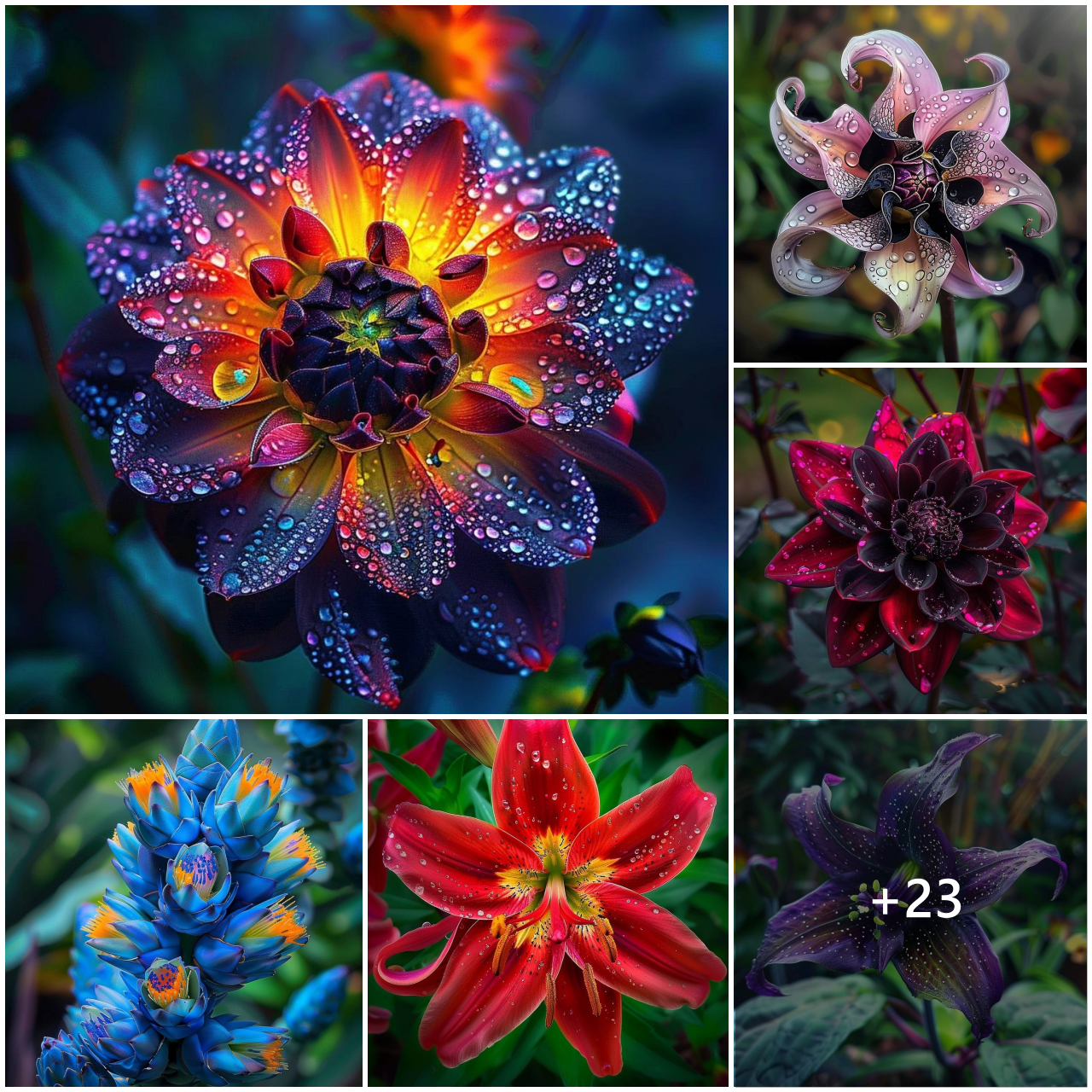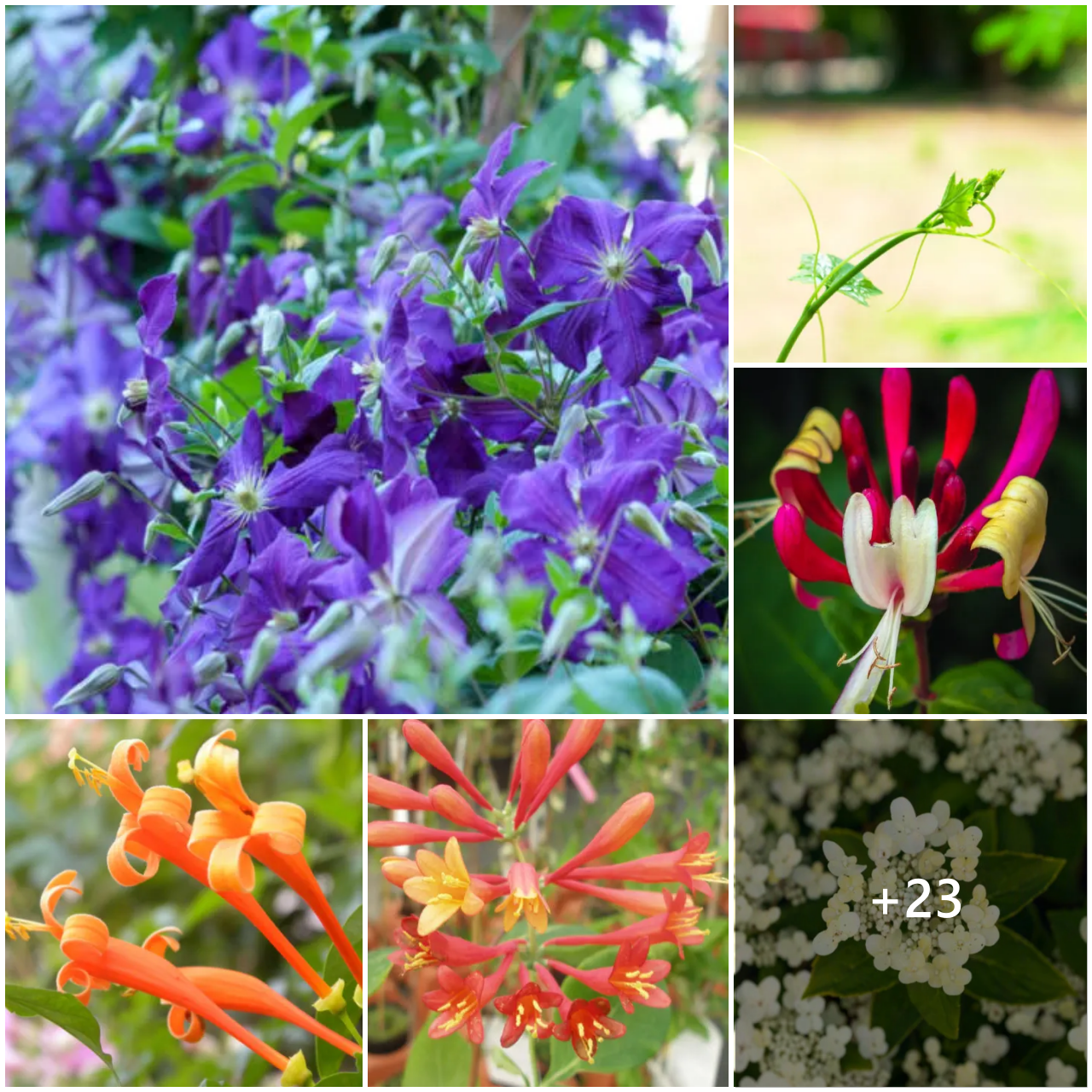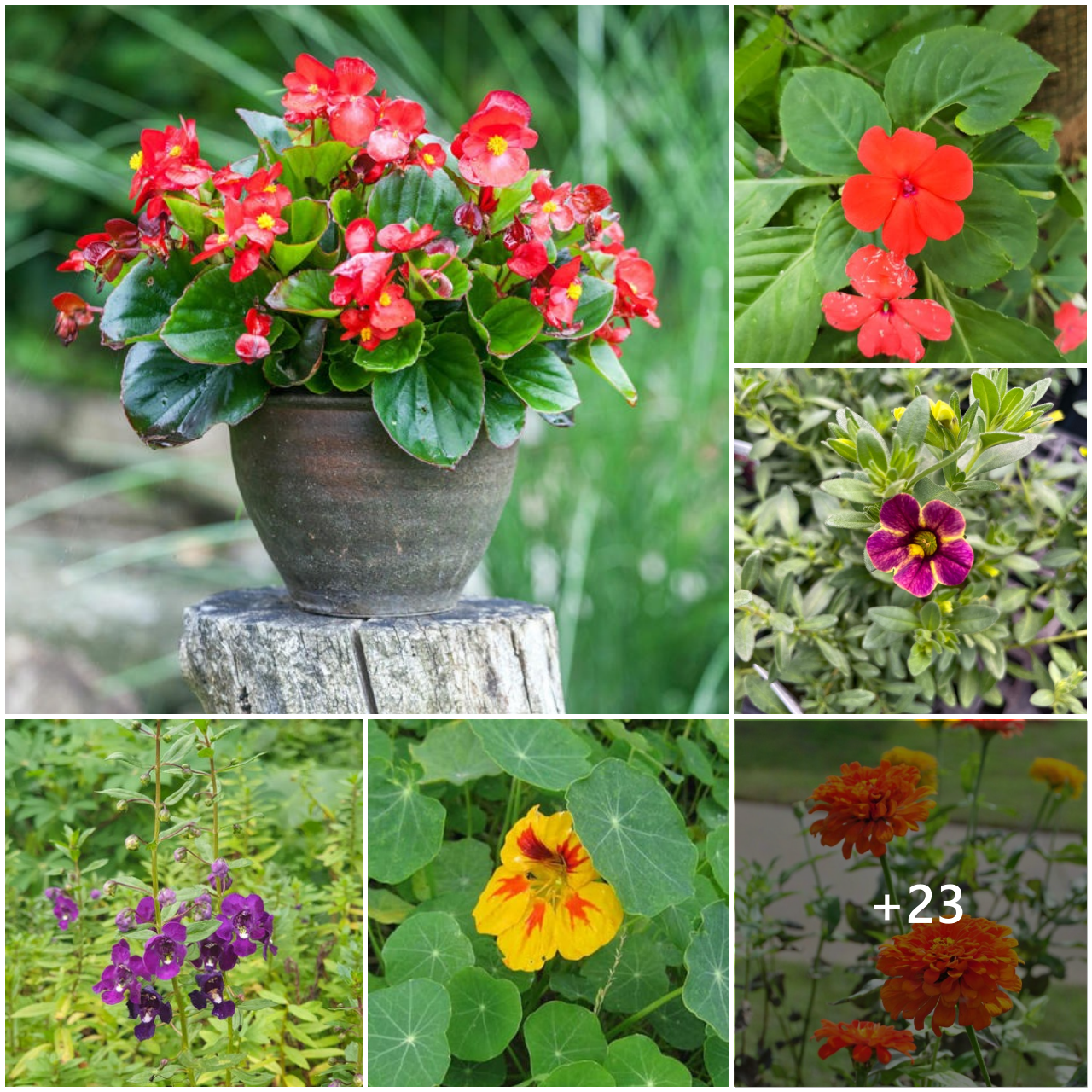Create a sense of solitude with fast-growing plants that screen views while enhancing the garden.
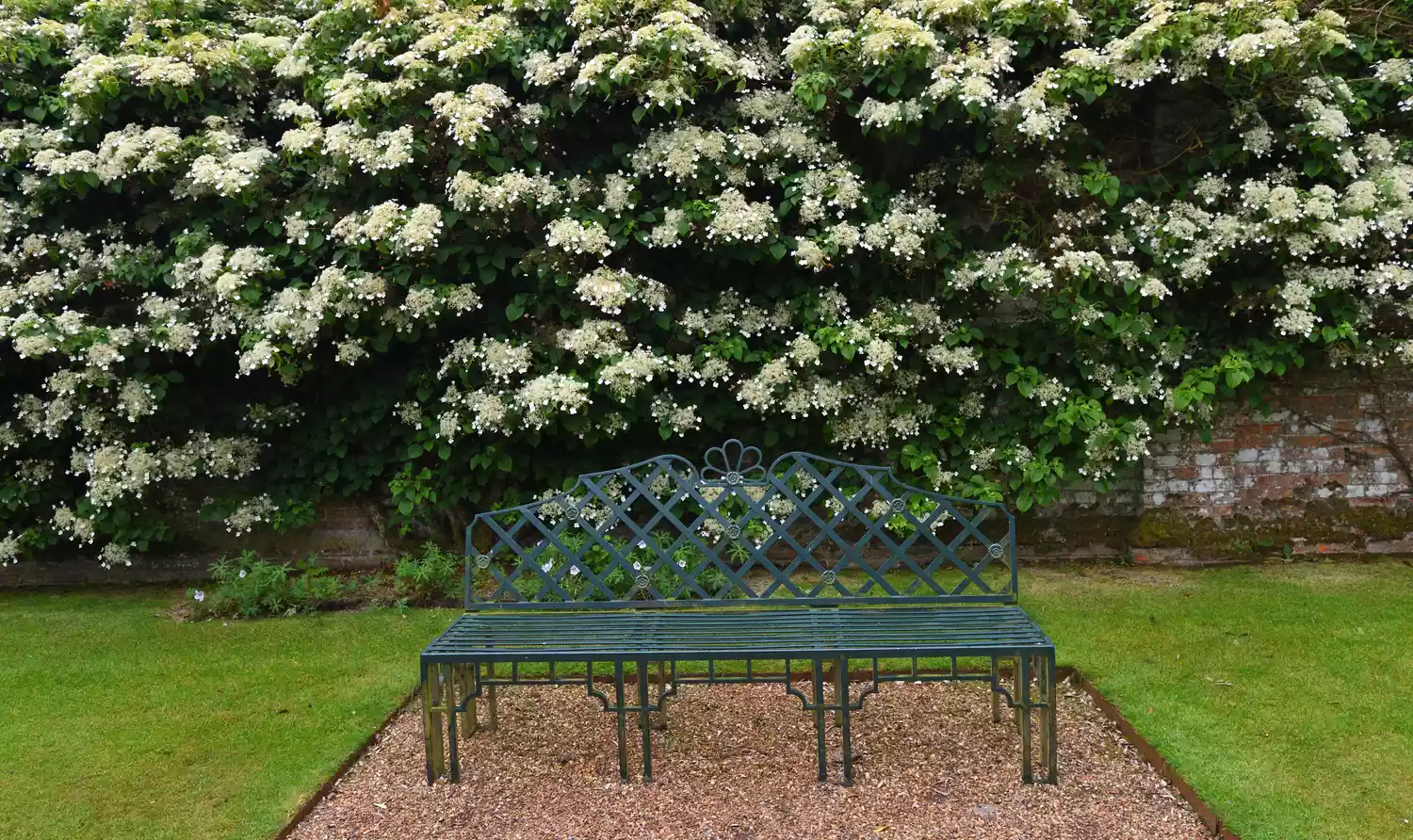
Fences might make good neighbors, but they render a boring view. When it comes to creating privacy, why not go green? Plants are perfect for space-making in the landscape, whether you want to establish a solid wall of separation or create a more subtle sense of seclusion. And unlike fences, plants have a soft touch in the landscape, adding texture and color to your garden rooms. The best plants for privacy include a mix of shrubs, vines, and tall grasses that complement your garden aesthetics while screening views .
When it comes to planting up privacy, you have options. You can plant a traditional hedgerow of a single shrub or mix things up by intermingling different plant materials in a creative ensemble. In addition to a variety of shrubs available for screening, grasses add interesting texture and architecture to privacy plantings. Trellises and arbors supporting vines also contribute to a sense of intimacy and seclusion. You can adjust the height and density of the planting depending on how much enclosure you desire, from a living wall to a thin veil of seclusion.
Oakland® Holly
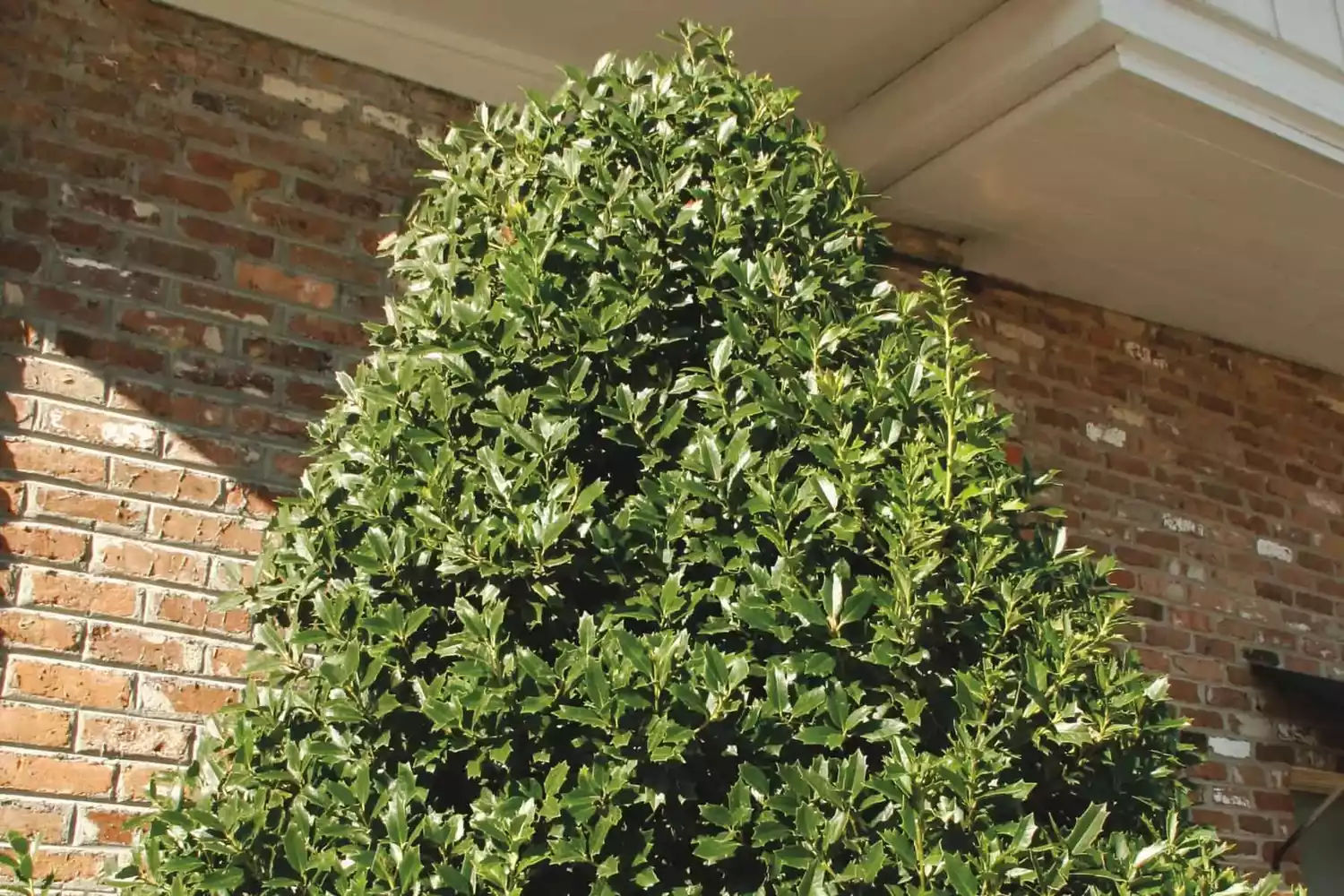
- Botanical Name: Ilex hybrid ‘Magland’
- Sun Exposure: Full Sun to Part Shade
- Soil Type: Moist, Well-draining, Rich
- Soil pH: Acidic (5.2-6.8)
With dark green foliage and a dense, pyramidal habit, Oakland® holly is a gorgeous evergreen for planting as a privacy hedge or as an accent in a mixed border. Growing 15 to 20 feet tall and 12 to 15 feet wide, Oakland holly makes a sizable planting. Plants are self-fruitful (meaning they don’t require a different pollinator) and produce red berries that attract winter songbirds.
Cleyera
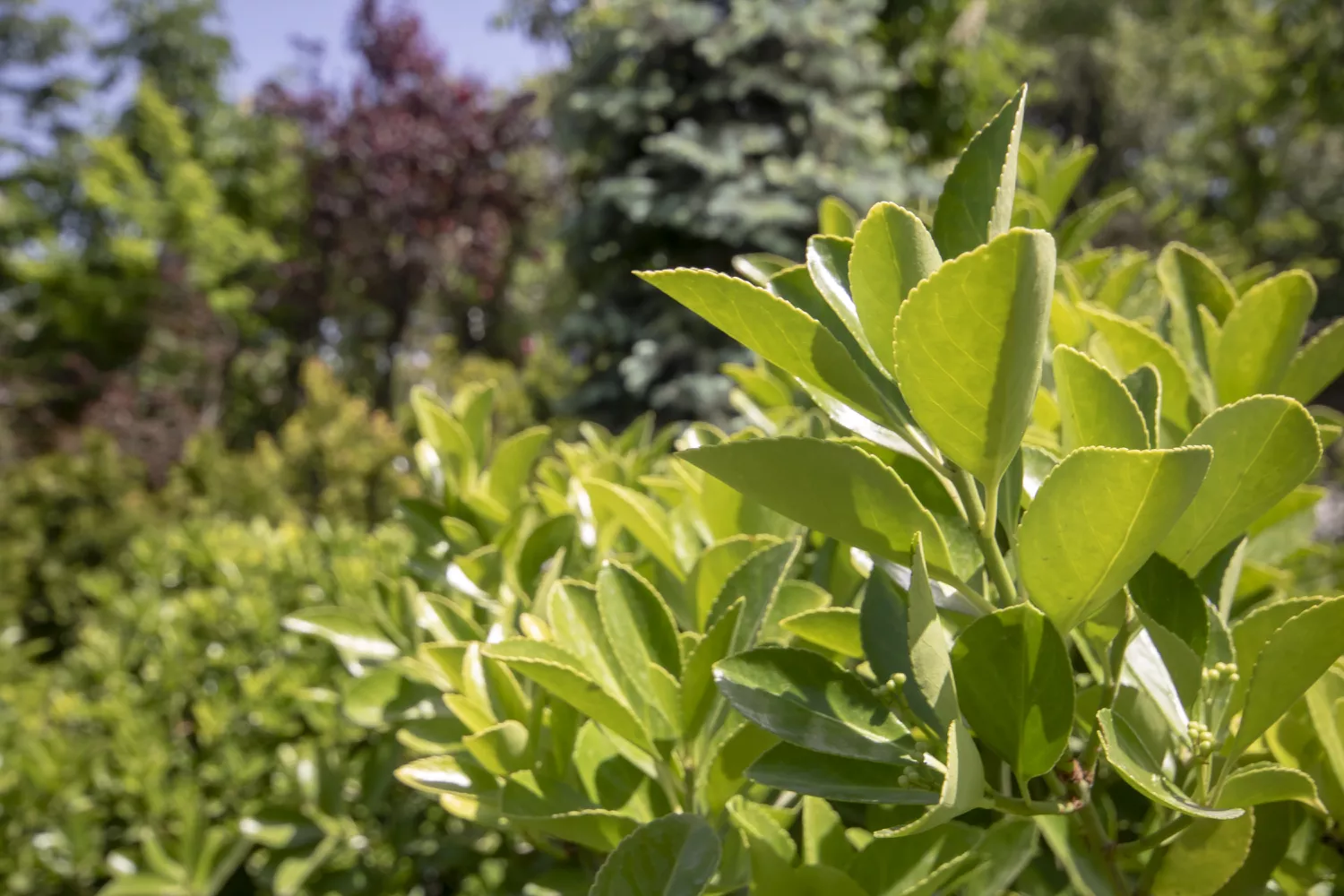
- Botanical Name: Cleyera japonica
- Sun Exposure: Full Shade to Full Sun
- Soil Type: Well-draining, Rich
- Soil pH: Acidic (5.0-6.5)
Cleyera is a classic shrub for screening. Dark evergreen foliage is shiny and smooth, with some variegated varieties available. Cleyera benefits from afternoon shade in hotter locales and tolerates heavy shade. Plant as a hedge or to provide contrast in mixed borders. Cleyera is drought tolerant once established.
Crossvine
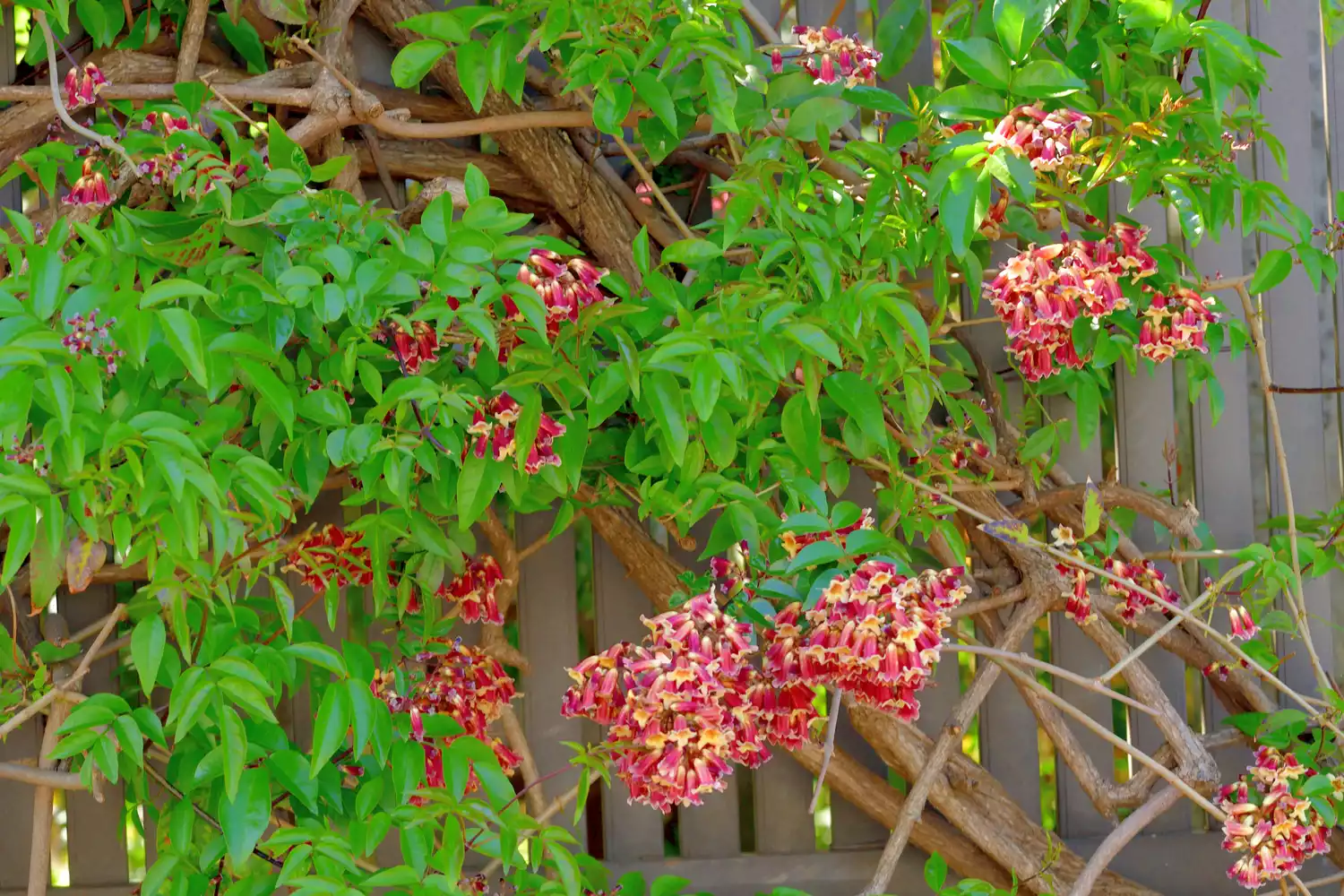
- Botanical Name: Bignonia capreolata
- Sun Exposure: Full Sun to Part Shade
- Soil Type: Dry to Moist, Well-draining, Rich
- Soil pH: Slightly Acidic to Slightly Alkaline (6.0-8.0)
This tropical-looking vine is native to eastern woodlands where its stunning red-orange blooms provide an early source of nectar for hummingbirds and butterflies. Crossvine is an aggressive grower, making it ideal for screening. It requires sturdy support and is great for covering fences and arbors. This hardy vine tolerates heat, drought, and heavy shade, though it flowers better with more sun.
Camellia
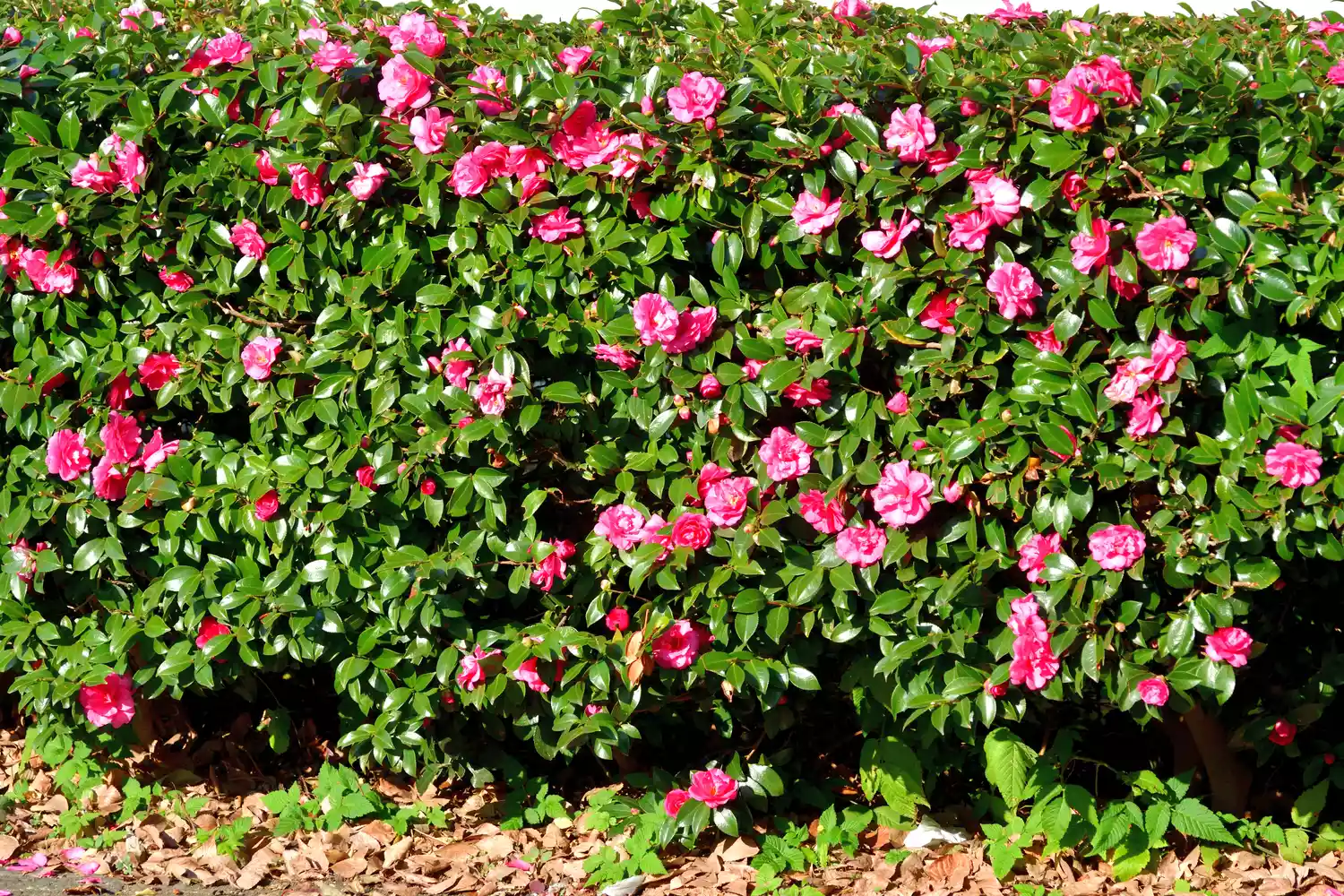
- Botanical Name: Camellia species and hybrids
- Sun Exposure: Part to Full Shade
- Soil Type: Moist, Well-draining, Rich
- Soil pH: Acidic to Neutral (5.8-6.5)
Camellias enchant the winter garden with vibrant red, pink, or white blooms that open when the rest of the garden sleeps. Glossy, evergreen foliage provides year-round screening and a gorgeous backdrop to other flowering plants. Camellias can be challenging to grow, but are with the effort for those rose-like blooms.
Climbing Hydrangea

- Botanical Name: Hydrangea anomala ssp. petiolaris
- Sun Exposure: Part Sun to Full Shade
- Soil Type: Moist, Well-draining, Rich
- Soil pH: Acidic (4.5-6.5)
Climbing hydrangea is a woody vine that looks rather shrub-like when young, but once established grows quickly to over arbors, gazebos, or fences. Though an aggressive grower, climbing hydrangea has an elegant appearance and can easily be pruned to maintain the desired size. Summer brings a blanket of fragrant white blooms perfect for cutting and drying. Plants tolerate shade, but bloom best with some sun.
Carolina Yellow Jessamine
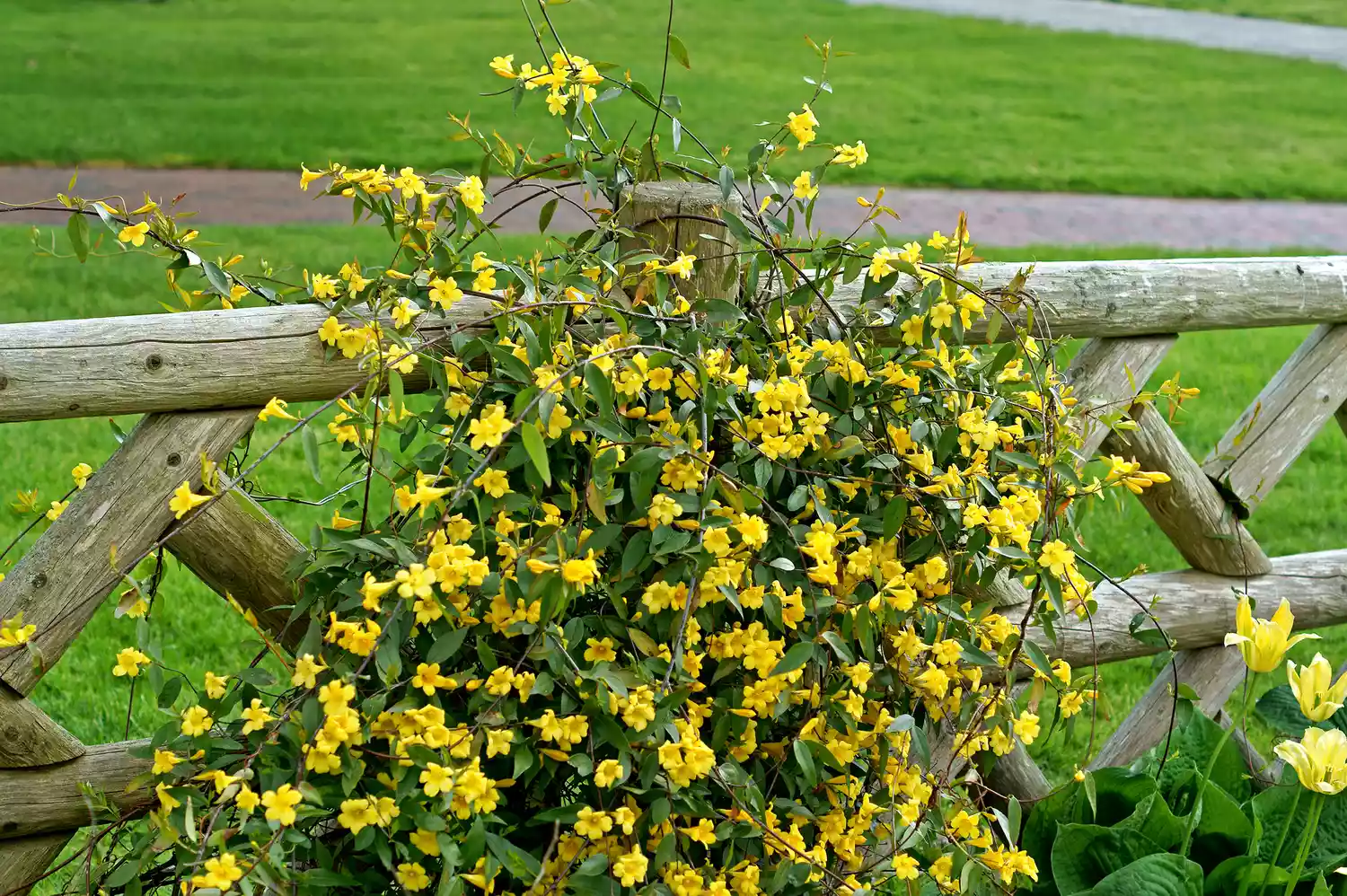
- Botanical Name: Gelsemium sempervirens
- Sun Exposure: Full Sun to Part Shade
- Soil Type: Moist, Well-draining, Rich
- Soil pH: Acidic to Slightly Alkaline (5.5 to 8.0)
This southeast native vine shines with an abundance of fragrant, golden yellow blooms opening late winter to early spring against glossy evergreen foliage. Carolina yellow jessamine is not overly aggressive, making it a good choice for screening porches and other areas close to masonry and siding, where other vines may be destructive. The thin, wiry stems climb by twining to cover a trellis, arbor, or fence.
Yew Podocarpus
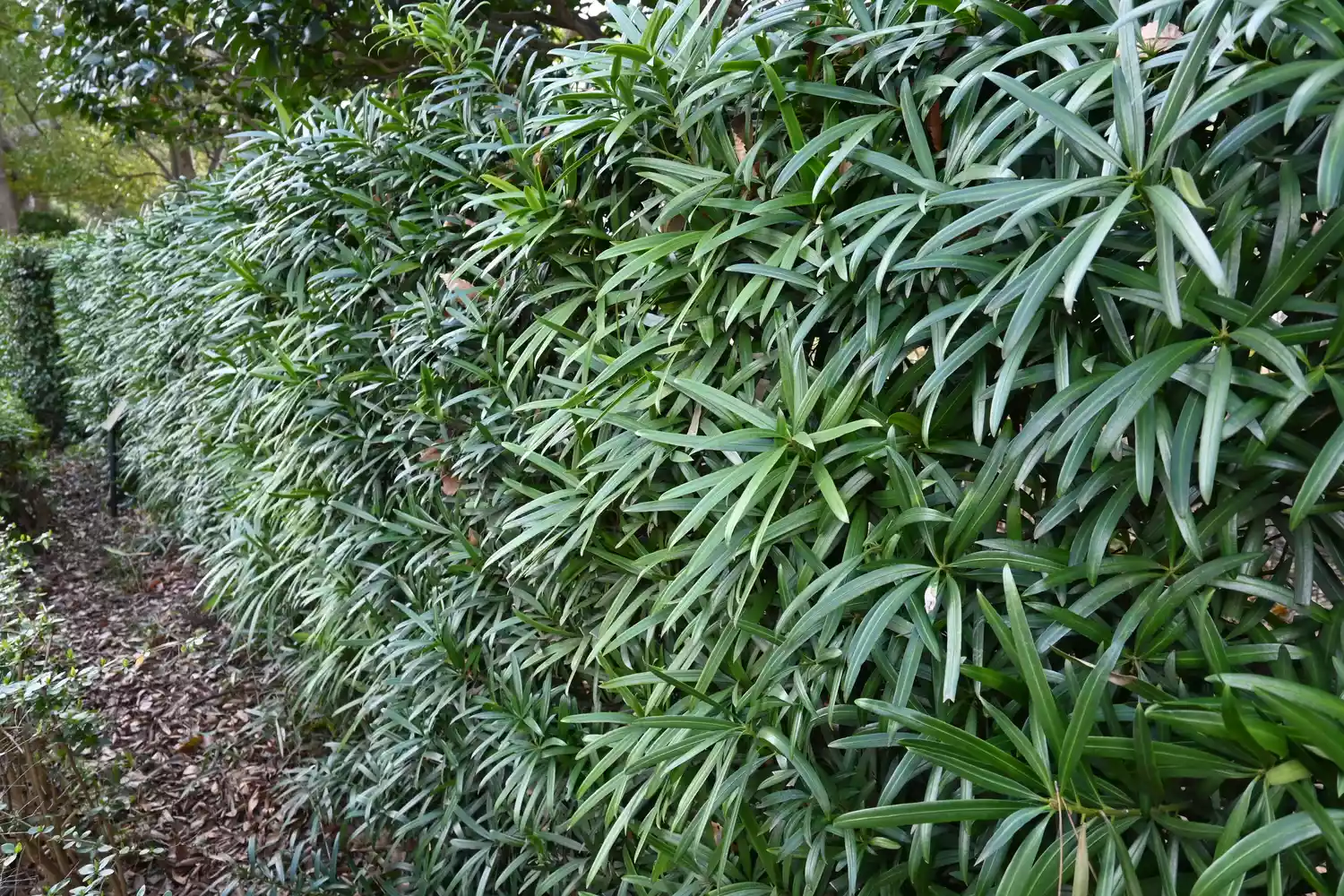
- Botanical Name: Podocarpus macrophyllus
- Sun Exposure: Full Sun to Part Shade
- Soil Type: Well-draining, Rich
- Soil pH: Acidic to Neutral (4.5-7.5)
Yew podocarpus is a narrow, conical evergreen perfect for growing as a manicured hedge or integrated into mixed plantings as a vertical accent. Thick, but soft textured needles are deep green and arranged in a spiral pattern along branches. Podocarpus tolerates heavy pruning and can be shaped to suit your needs. Plants do not tolerate wet soil. It performs well in coastal conditions and is heat and drought tolerant once established.
Fringe Flower
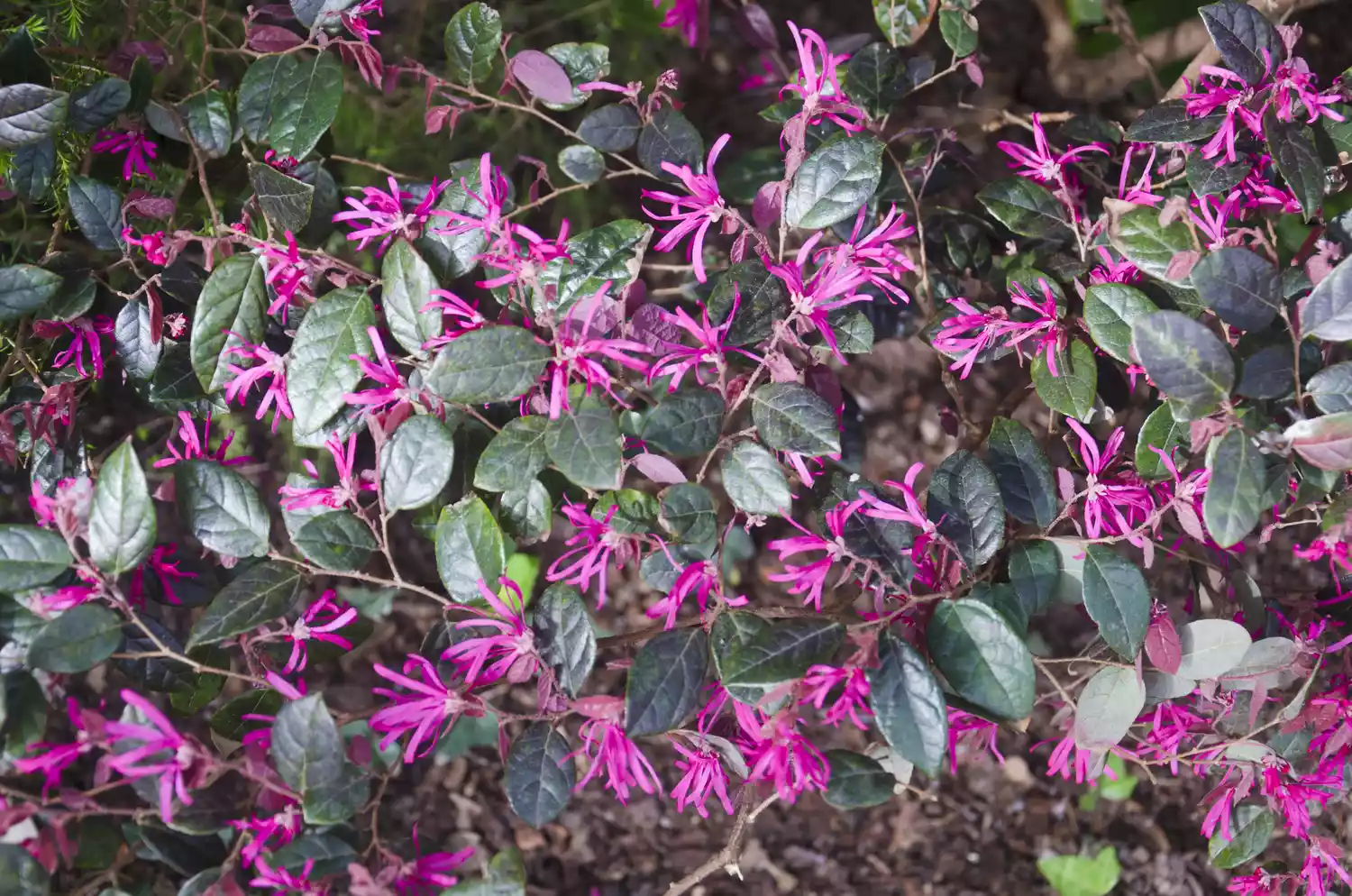
- Botanical Name: Loropetalum chinense
- Sun Exposure: Full Sun to Part Shade
- Soil Type: Moist, Well-draining, Rich
- Soil pH: Acidic (4.5-6.5)
With gorgeous purple foliage and fuchsia blooms, fringe flower adds pizzazz to privacy plantings. A variety of purple-leafed cultivars are available, ranging in size from just 2 feet to over 10 feet tall. Fringe flower tolerates shaping and pruning to maintain desired size. These low-maintenance beauties are drought tolerant once established and are not bothered by deer.
‘Taylor’ Juniper
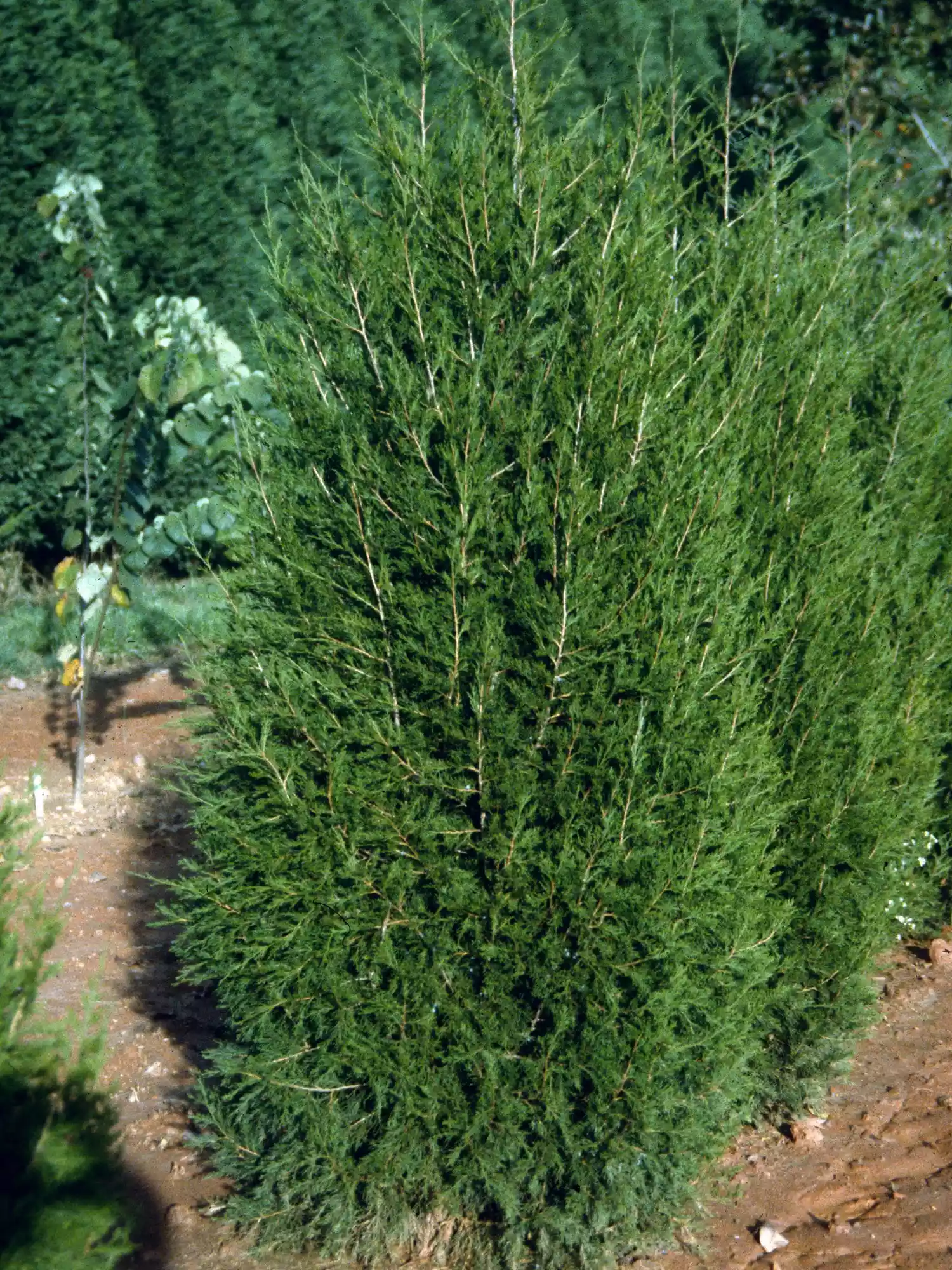
- Botanical Name: Juniperus virginiana
- Sun Exposure: Full Sun
- Soil Type: Dry to Average, Well-draining
- Soil pH: Acidic to Neutral (4.7 to 7.8)
Growing 20-25 feet tall and just 3-4 feet wide, ‘Taylor’ Juniper provides privacy in tight spaces. This columnar evergreen is incredibly versatile, equally at home in formal settings and as an accent in cottage gardens. Prized for its blue-green foliage and narrow habit, ‘Taylor’ juniper is easy to grow in a variety of soils, including dry, clay, compacted, and nutrient-poor sites. Avoid excess soil moisture. Plants are drought tolerant once established.
‘Janed Gold’ Arborvitae
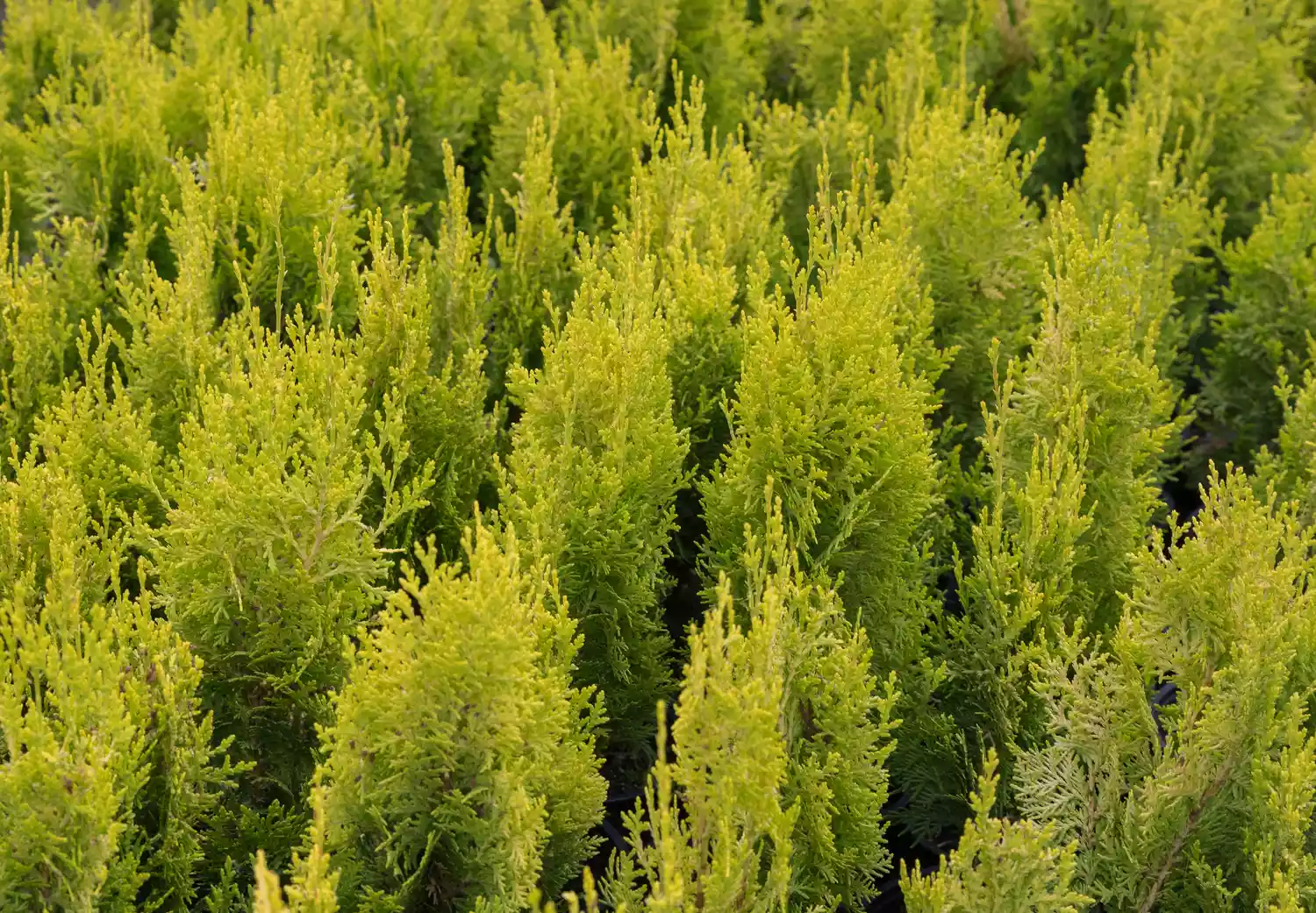
- Botanical Name: Thuja occidentalis
- Sun Exposure: Full Sun
- Soil Type: Moist, Well-draining
- Soil pH: Slightly Acidic to Slightly Alkaline (6.0 to 8.0)
Arborvitae has long been grown as a screen or hedge, but old standard varieties grow quite large. Not so for ‘Janed Gold’. With a slender profile of just 4-5 feet wide, this pyramidal evergreen provides privacy in the tightest of spaces. Its vibrant, golden foliage brightens gardens all year round. This American native tolerates a range of growing conditions, including clay, wet soils, black walnuts, and air pollution.
Bright ‘N Tight™ Carolina Laurel
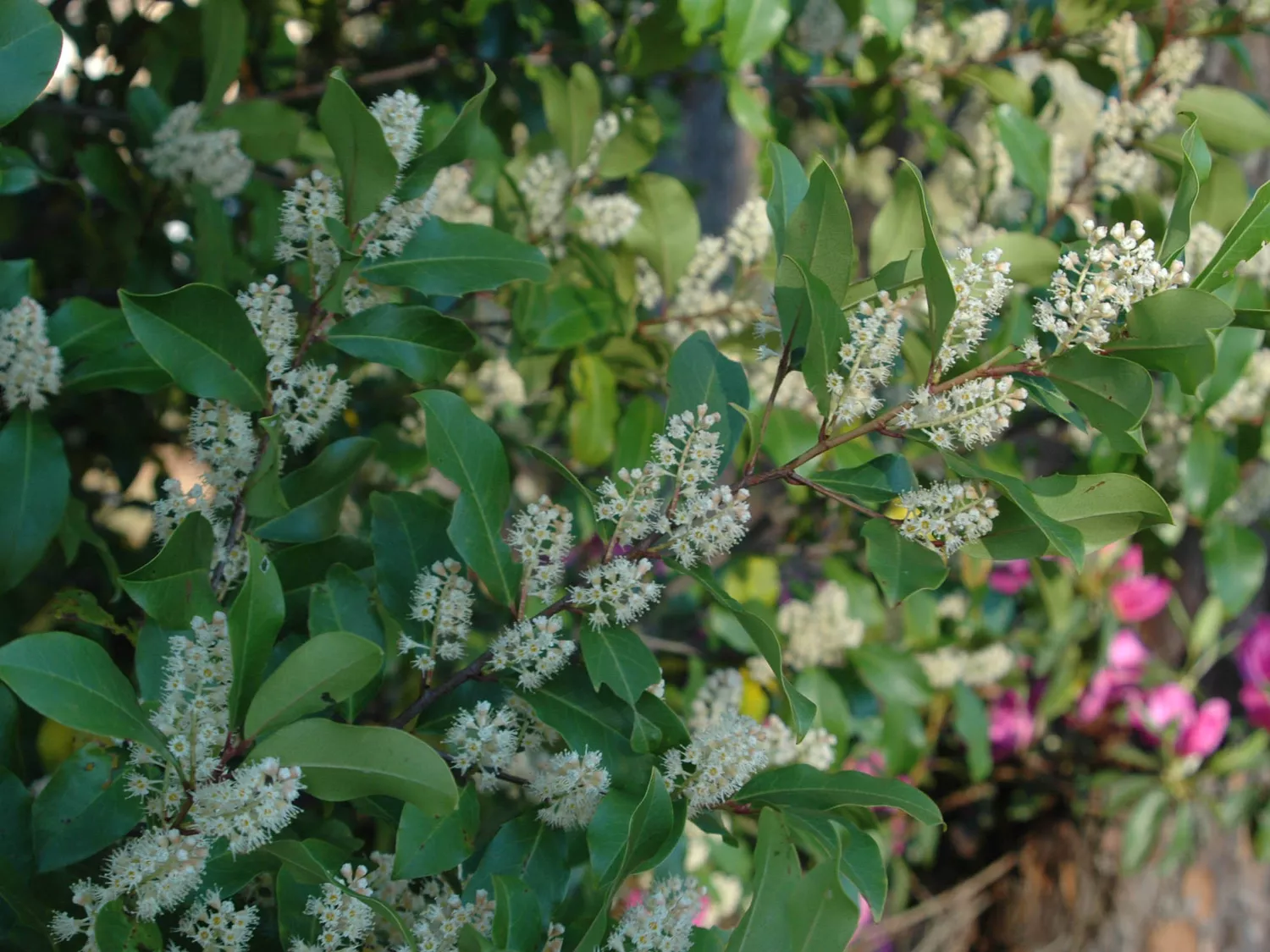
- Botanical Name: Prunus caroliniana ‘Monus’
- Sun Exposure: Full Sun to Part Shade
- Soil Type: Moist, Well-draining, Rich
- Soil pH: Slightly Acidic to Slightly Alkaline (5.5-8.0)
This gorgeous broadleaf evergreen provides privacy and so much more. Fragrant spring blooms attract butterflies and native bees, while shiny black fruits draw hungry songbirds. The lustrous foliage resists deer browsing. Bright ‘N Tight™ is a compact variety of this stunning native selected for its landscape-friendly size. Established plants have good drought and salt tolerance.
‘Cloud Nine’ Switch Grass
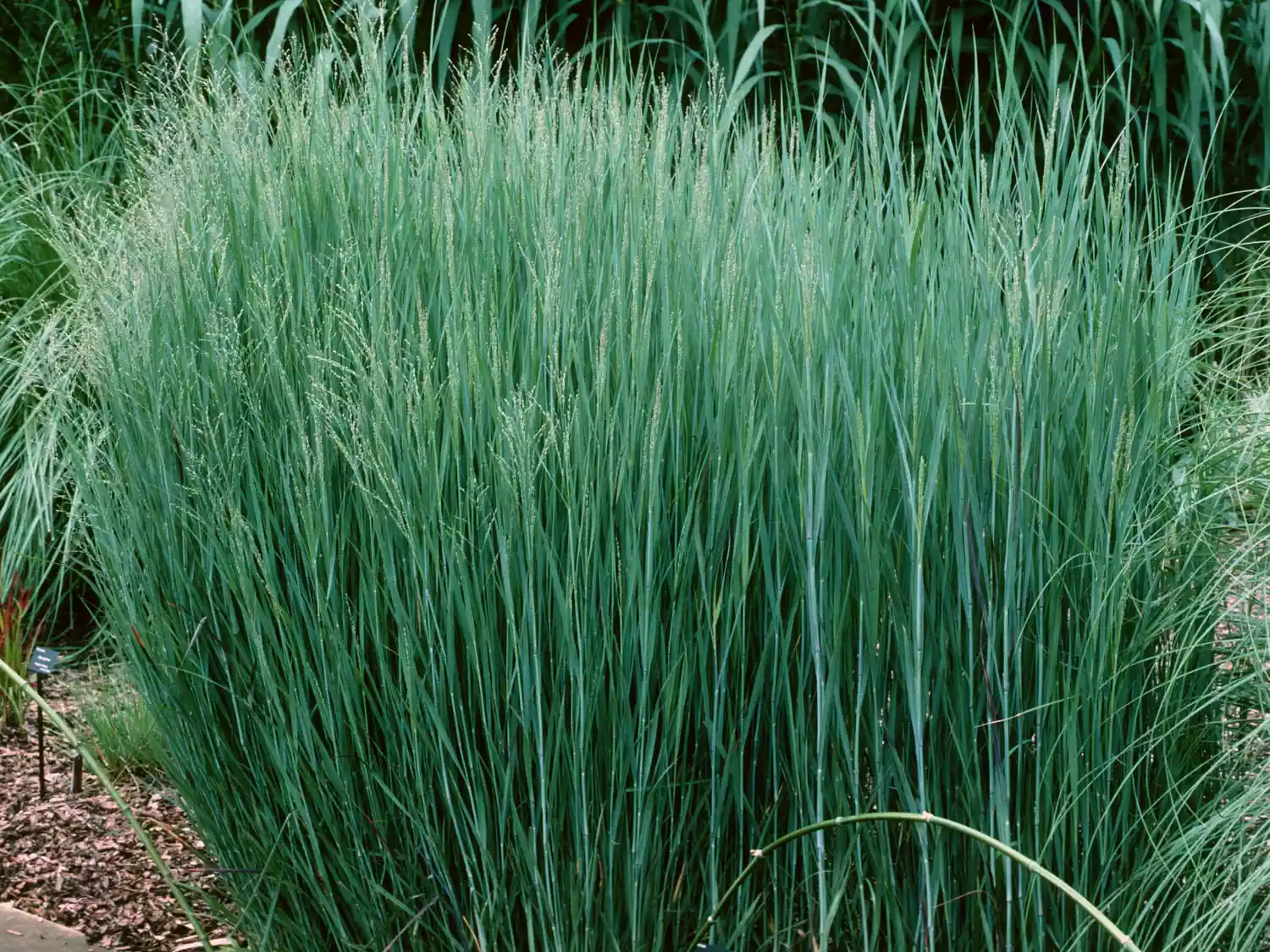
- Botanical Name: Panicum virgatum
- Sun Exposure: Full Sun
- Soil Type: Average to Moist, Well-draining
- Soil pH: Acidic to Slightly Alkaline (5.5-8.0)
Switch grass is a native clump-forming grass that dominates tall-grass prairies, though it is also common along roadsides and stream banks, as well as in open woods. ‘Cloud Nine’ is a stunning variety, among the tallest of switch grasses reaching a height of 5 to 7 feet in bloom. The cultivar is named for its airy flower heads, that top the blue-green foliage in a cloud-like effect. The seeds provide food for wintering songbirds. Switch grass tolerates both wet and dry conditions, salt spray, and is drought tolerant once established.
Anise Tree
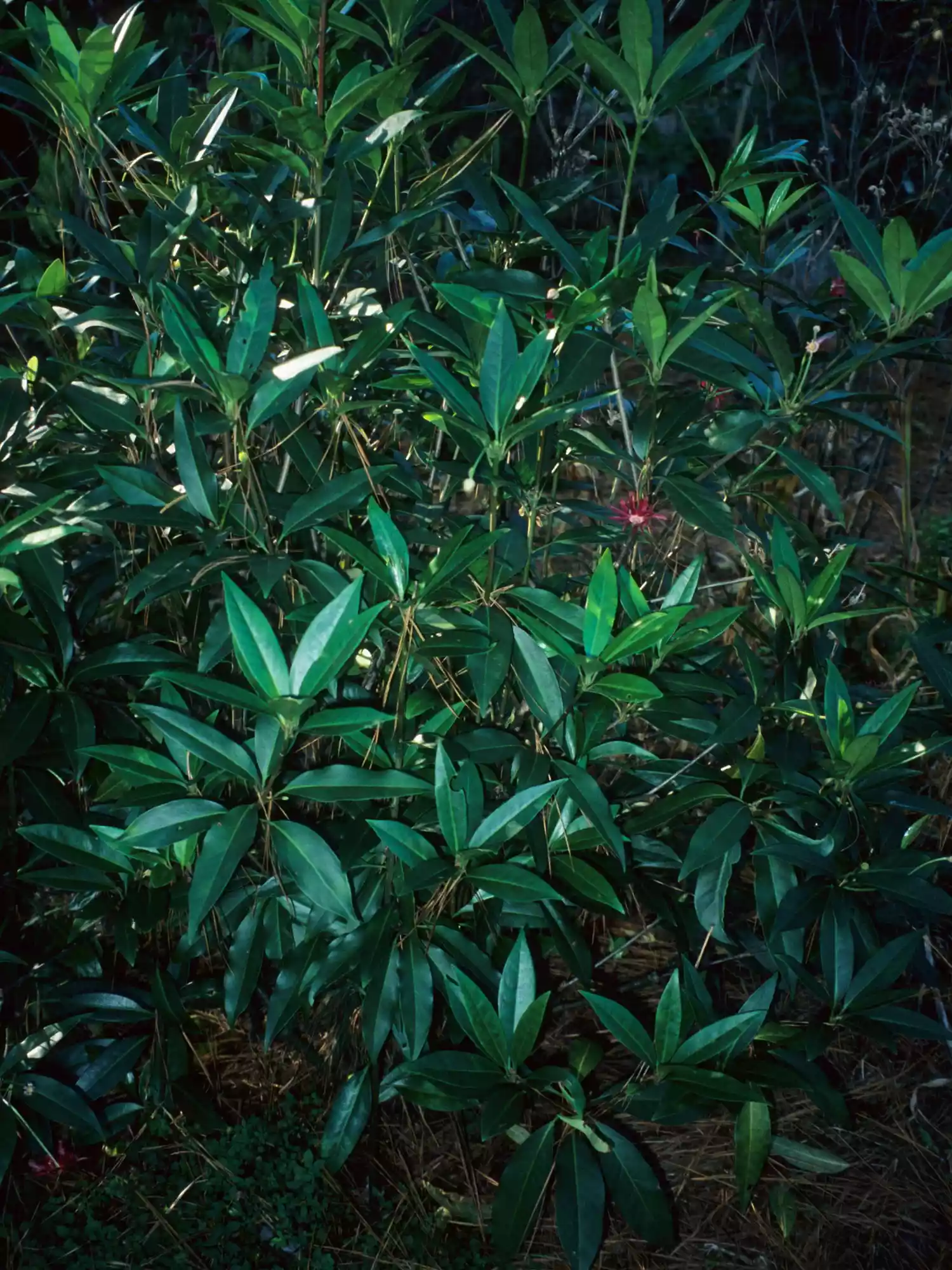
- Botanical Name: Illicium species
- Sun Exposure: Part to Full Shade
- Soil Type: Moist, Rich
- Soil pH: Slightly Acidic (5.5-6.2)
This dense, evergreen shrub is native to the southeast where it grows in moist woodlands. Multiple species and varieties are available, depending on the desired ornamental traits. Florida anise tree, I. floridanum, produces star-shaped crimson blooms against attractive olive-green foliage. The small anise tree, I. parviflorum, is grown for its foliage rather than flowers, with several cultivars available sporting golden foliage.
Indiangrass
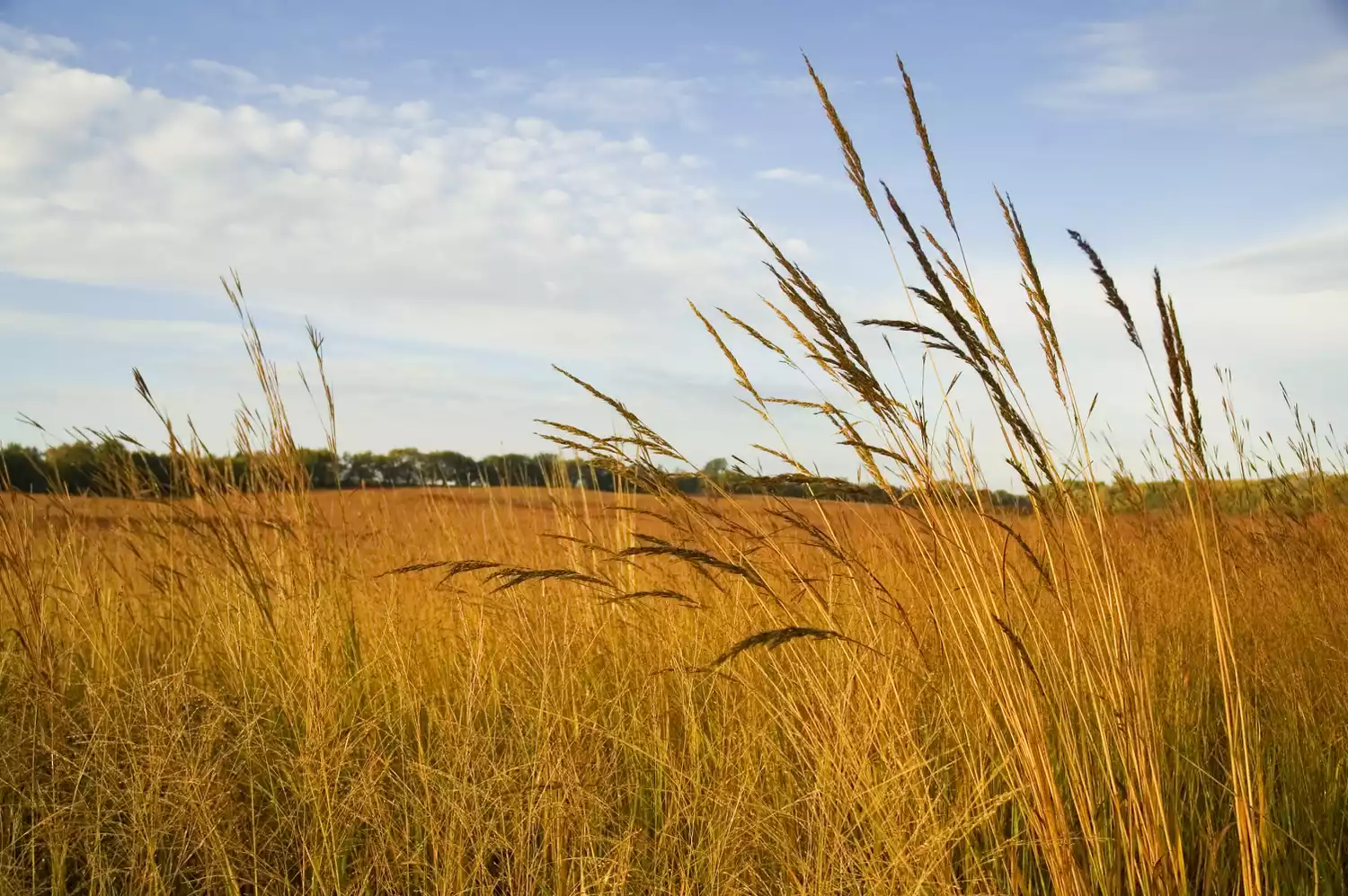
- Botanical Name: Sorghastrum nutans
- Sun Exposure: Full Sun
- Soil Type: Dry to Average, Well-draining
- Soil pH: Acidic to Slightly Alkaline (4.8 to 8.0)
With vertical stems that stand 5 to 7 feet tall, Indiangrass makes a stately addition to mixed privacy screens. It can also be used for lining sidewalks or other narrow spaces. Several varieties are available with vibrant green to blue-green foliage. Golden plumes emerge on sturdy stems in late summer and remain attractive throughout winter. Cut plants to the ground in late winter before new growth emerges.


